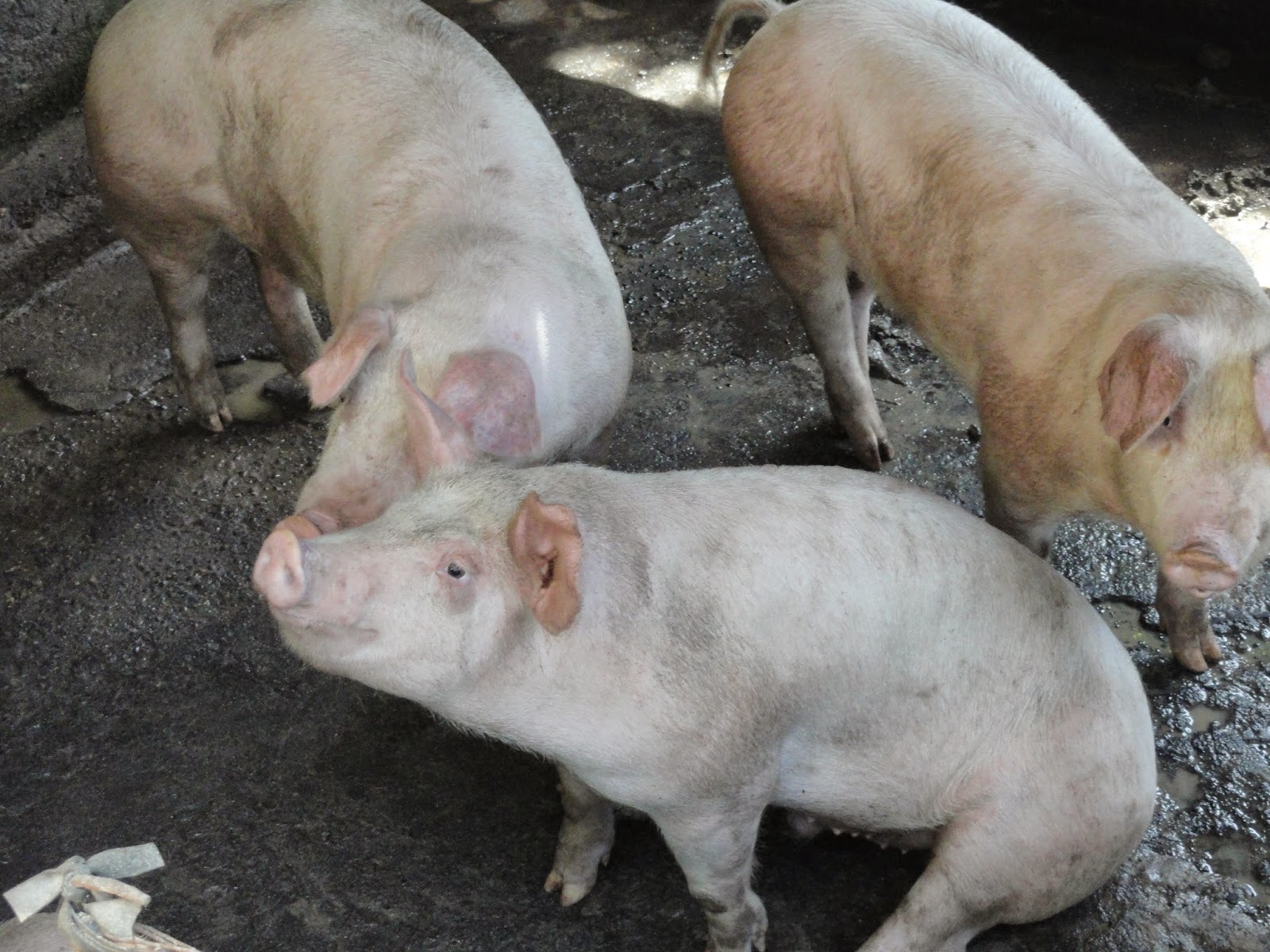Sorry this post is a few weeks in the making - we just got back from our second field trip, this time to the Atlantic coast of Costa Rica and even into Panama. I'll hopefully be posting about it soon!
So the Wednesday before we left for the field trip was our last Humans in the Tropics lecture / field trip for our time in Monteverde. We spent it learning about livestock and meat consumption. We learned about the history of livestock here in Monteverde and its impact on the people and the economy. In the northern province of Guanacaste, land was primarily converted from rainforest to agricultural and grazing lands for cattle. In other parts of Central and South America, rainforest was also being drastically transformed into land for cattle. Why? Our fetish with hamburgers. In 1995, Brazil exported over $500 million worth of beef. In 2003? $1.5 billion. Our desire to consume beef has been exponentially growing in the past few decades, with no sign of slowing down. With this increase in beef consumption comes a drastic increase in deforestation of tropical rainforest in Central and South America.
Some surprising numbers I learned from lecture that day:
- Of the 7 billion people living on Earth, 2/3 are vegetarian.
- That only 1/3 of the human population have diets primarily focused on meat. The majority of this population lives in developed nations. As more and more countries become developed, that 1/3 could easily turn into 2/3, or higher. This increase in demand must mean an increase in supply. How do we increase supply? By cutting down rainforest to make land for livestock.
Some other startling information we learned was the health of livestock. In the United States, 70% of antibiotics used each year are given to livestock.
Yes, you read that right. Livestock are getting the majority of produced antibiotics made in our country every year. They are used to treat diseases, which really is extremely important and should be continued. The prevention of disease is just as important, though I would argue that the amount used for this purpose could be greatly reduced. The worst use of antibiotics is for growth promotion. Many medications are given to livestock and poultry simply to increase their size and shape, which would increase the meat from each animal in a quicker period of time.
Anyway, we traveled to two farms that day. The first was owned by an elderly man named Don Jesus. Don Jesus owns and runs a small-scale dairy farm here in Monteverde. He primarily uses the milk to make cheese or to directly sell to consumers at local markets. He owns 11 cows, 8 of which give milk. He also raises pigs as a way of making some electricity and getting rid of some food scraps (I'll explain more about the electricity part later).
 |
| Three pigs that Don Jesus has raised. |
 |
| Chickens on Don Jesus's farm |
 |
| I was asking Don Jesus's wife about her chickens. Also, photo courtesy of Dan L. |
Don Jesus also showed us his biodigester, which is a system that converts pig manure into usable energy. I won't get into the nitty-gritty science, but it's basically a long tube that holds the pig (or other animal's) manure and turns it into methane gas, which can be used to power whatever the farmer needs on the farm or his house.
We stayed for lunch at this farm and left after a few hours to go look at another farm, one that is not nearly as environmentally friendly as that of Don Jesus's, and was also one not nearly as conscious towards animal welfare. It was a pig farm owned by a man who runs a butcher shop. He controls every part of the business, including the breeding of the pigs, the raising of piglets, and the slaughtering of the animals for his butcher shop. I have no pictures to share, as this particular farm made me sick to my stomach. I was able to stay behind with the man's horse instead of getting a full tour of his property, who was tied up to a fence post. It helped and he was really sweet. I brought him some grass from a nearby field, and that made him perk up. There was also a dog tied up nearby, and I gave her all of my water.
 |
It was just a horrible place, I can't even describe the noises of the pigs. I think what hit me the hardest about that day was how poor the living conditions were for the animals: pigs, horse, and dogs. The pigs were stuffed in pens, sometimes 6 or more in a space less than the square footage of your small bathroom. Nails sticking out, no room to roam, nowhere separate to go to the bathroom. The horse was tied up so tightly to a post, out in the boiling sun, with no water. He had so many ticks and was really thin. I found out later that this man bought the horse from a neighbor to use as meat for his butcher shop, which didn't help my impression of him at all.


No comments:
Post a Comment